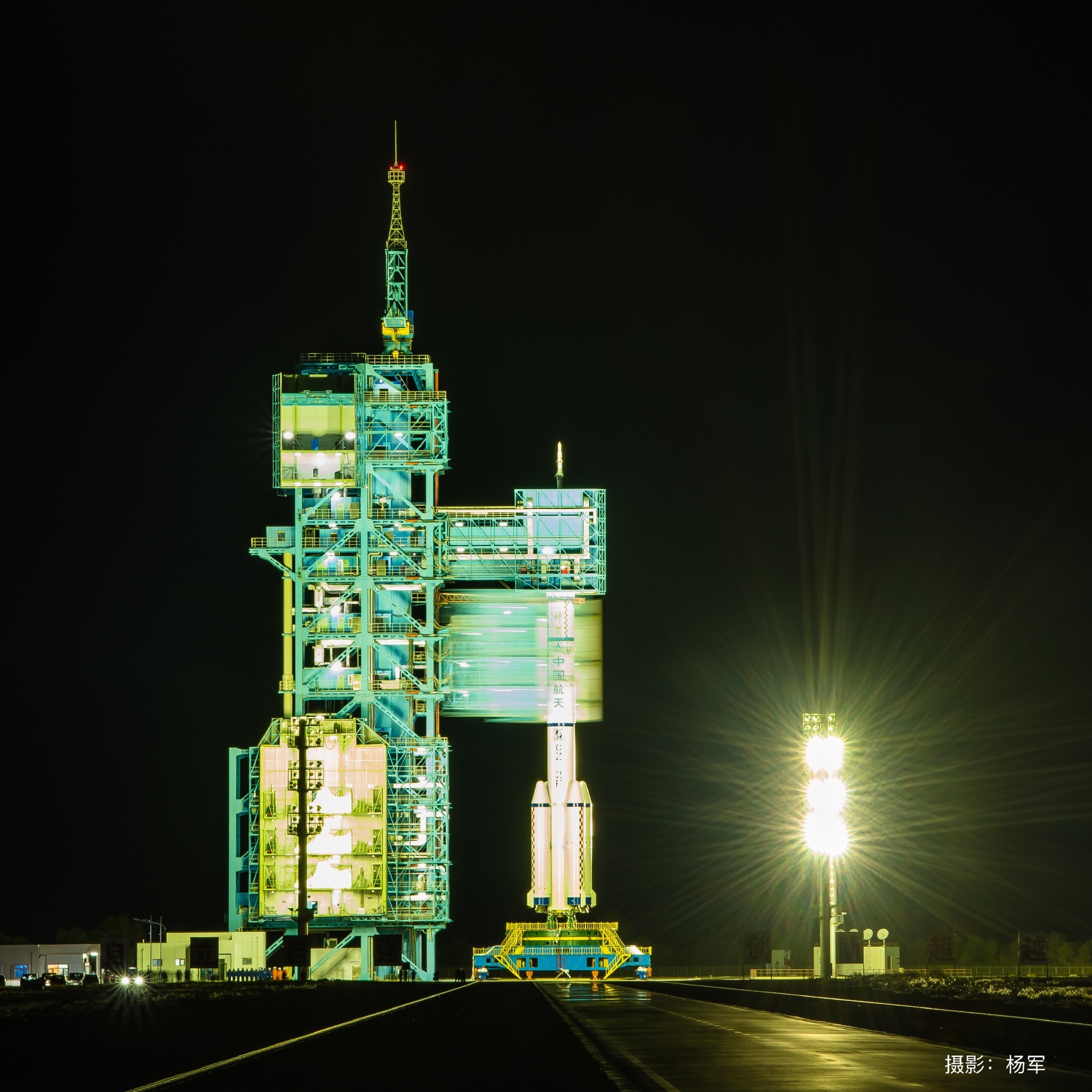China's Shenzhou 14 is on standby to launch in case of space station emergency
The spacecraft could launch with just 8.5 days' notice.

China just launched what is planned to be its longest crewed mission to date, but the next spacecraft in the series is ready to blast off should the Shenzhou 13 astronauts need rescuing.
Shenzhou 13 lifted off on Oct. 15, with commander Zhai Zhigang and colleagues Wang Yaping and Ye Guangfu arriving at the orbiting Tianhe module of the Tiangong space station 6.5 hours later. Back on the ground at the Jiuquan Satellite Launch Center in the Gobi Desert, Shenzhou 14 and its Long March 2F launch vehicle are already on standby.
"The assembly and testing of Shenzhou 14 has been completed at the base, so the spacecraft is now on standby, ready for rapid launch and emergency rescue operation," Jia Shijin, chief designer of the crewed spacecraft system of China Academy of Space Technology (CAST), told CCTV.
Related: The latest news about China's space program
Zhai, Wang and Ye are expected to stay aboard Tianhe, which will serve as the core of the three-module station after additional launches, for six months. During this time they will perform two to three extravehicular activities, or spacewalks, and carry out a range of scientific and technological experiments. But Shenzhou 14 will be ready to assist should an issue such as spacecraft malfunction or impact from debris or micrometeorites endanger the crew.
The China Academy of Launch Vehicle Technology (CALT), the developer of the Long March 2F launcher, told Chinese newspaper Global Times that, in the case of emergency, every participant required for an emergency launch should be present within 48 hours and be able to launch within nine days.
The emergency planning is reminiscent of the NASA "Launch On Need" missions planned to rescue space shuttle crews if their vehicles had suffered damage in orbit. Such standby mission preparations are now standard practice for China's space station operations. Shenzhou 13 was similarly on standby for the duration of the Shenzhou 12 mission, which ran from June to September.
Get the Space.com Newsletter
Breaking space news, the latest updates on rocket launches, skywatching events and more!

Tianhe is the core module of the space station, providing living quarters for the crew and propulsion for the orbital outpost as well as a docking hub that allows multiple spacecraft to dock with it. Currently Tianhe has the Tianzhou 3 cargo spacecraft docked at its aft and Tianzhou 2 at the forward port of the docking hub. Shenzhou 13 performed China's first radial rendezvous and docking, approaching Tianhe from below with respect to the Earth.
If there are no emergencies, Shenzhou 14 will launch with its own crew after March 2022, when Shenzhou 13 returns to Earth. The Shenzhou 14 mission will oversee the arrival of two new space station modules to join Tianhe.
Follow us on Twitter @Spacedotcom and on Facebook.
Join our Space Forums to keep talking space on the latest missions, night sky and more! And if you have a news tip, correction or comment, let us know at: community@space.com.

Andrew is a freelance space journalist with a focus on reporting on China's rapidly growing space sector. He began writing for Space.com in 2019 and writes for SpaceNews, IEEE Spectrum, National Geographic, Sky & Telescope, New Scientist and others. Andrew first caught the space bug when, as a youngster, he saw Voyager images of other worlds in our solar system for the first time. Away from space, Andrew enjoys trail running in the forests of Finland. You can follow him on Twitter @AJ_FI.









